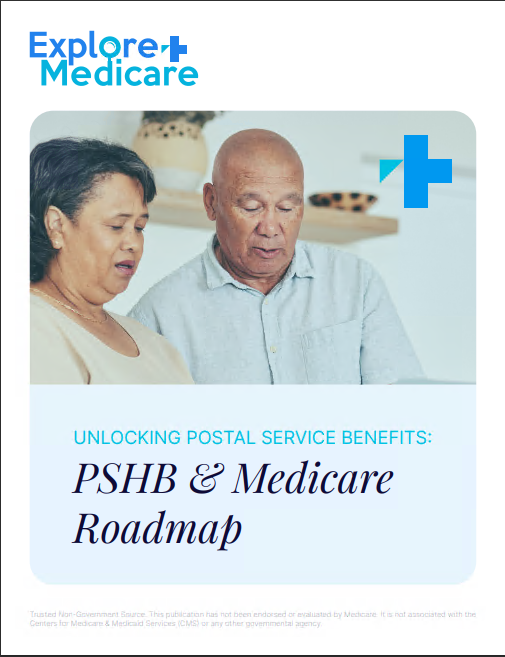Key Takeaways
-
Medicare Supplement Insurance (Medigap) continues to provide vital financial protection in 2025, especially for those who want more predictable out-of-pocket healthcare costs.
-
Despite the widespread attention Medicare Advantage receives, supplements still offer more freedom of provider choice and lower cost-sharing in certain scenarios.
Understanding What Medicare Supplements Are
Medicare Supplement Insurance, often called Medigap, is designed to fill the “gaps” in Original Medicare coverage. Original Medicare (Part A and Part B) doesn’t cover everything. You are responsible for deductibles, coinsurance, and copayments. That’s where Medigap steps in.
In 2025, Medigap still works the same way it always has. It helps you cover:
-
Part A hospital coinsurance and hospital costs beyond 60 days
-
Part B coinsurance and copayments
-
The first three pints of blood
-
Hospice care coinsurance
-
Skilled nursing facility coinsurance
-
Part A and Part B deductibles (with certain plan types)
-
Foreign travel emergency care (up to plan limits)
You must be enrolled in both Medicare Part A and Part B to buy a Medigap policy. And you can’t have both a Medigap plan and a Medicare Advantage plan at the same time.
Why Medigap Still Matters in 2025
With so much talk around Medicare Advantage plans in 2025, it’s easy to assume supplements are no longer relevant. But that’s not true. Here’s why Medigap remains important.
1. Predictable and Lower Out-of-Pocket Costs
Medicare Advantage plans can come with varying out-of-pocket costs depending on your health needs and provider network. With Medigap, you get more consistent and often lower cost-sharing, especially if you need frequent care or specialized services.
Many Medigap plans pay for nearly all Medicare-approved expenses after Original Medicare pays its share. That predictability can be a major financial relief for those managing chronic conditions or needing regular services.
2. No Referrals or Network Restrictions
One of the most valued features of Medigap is freedom of choice. You can see any doctor or hospital nationwide that accepts Medicare. No referrals. No pre-authorizations.
In contrast, Medicare Advantage plans usually operate through HMOs or PPOs. These plans may limit you to certain provider networks and require referrals for specialists. This can be frustrating if you travel frequently or split your time between states.
3. Ideal for Travelers and Snowbirds
For retirees who travel within the United States or spend parts of the year in different locations, Medigap offers flexibility that most Medicare Advantage plans can’t match. You don’t have to worry about being out of network because your coverage travels with you, as long as the provider accepts Medicare.
Some Medigap plans also include limited coverage for emergency care abroad, which adds an extra layer of peace of mind.
4. Protection From Rising Medical Costs
Healthcare costs continue to rise, and in 2025, this trend is no different. While Medicare Advantage plans often change benefits and cost-sharing annually, Medigap plans offer a more stable benefits structure. Once you enroll, your benefits remain the same year after year, as long as you keep your policy.
This predictability helps you plan your budget and avoid surprise expenses.
When You Can Enroll in a Medigap Plan
The best time to enroll in a Medigap plan is during your Medigap Open Enrollment Period (OEP). This six-month window starts when you’re both 65 or older and enrolled in Medicare Part B.
During this time:
-
You can buy any Medigap plan available in your state.
-
You can’t be denied coverage based on health history.
-
You won’t be charged more due to medical conditions.
After your OEP, you may still apply for a Medigap plan, but insurance companies may use medical underwriting. This means they can deny you coverage or charge higher premiums based on your health.
In 2025, some states offer additional protections, such as guaranteed issue rights or special enrollment periods, but these vary. It’s important to check your local rules.
How Medigap Works With Other Medicare Coverage
Medigap is meant to work with Original Medicare. It doesn’t replace Medicare but complements it. Here’s how the coordination works:
-
Medicare pays first: Medicare Part A and B cover their share of approved services.
-
Your Medigap plan pays second: It picks up some or all of the remaining costs, depending on the plan you have.
Medigap does not include prescription drug coverage. If you want drug coverage, you’ll need to enroll in a standalone Medicare Part D plan.
Also, you can’t use Medigap to pay for costs related to Medicare Advantage. If you’re enrolled in an Advantage plan, you cannot use a Medigap policy.
Comparing Medigap and Medicare Advantage: A 2025 Perspective
Both Medigap and Medicare Advantage have a place in the current healthcare landscape. Your choice depends on your needs, preferences, and lifestyle. Here’s a simplified comparison to help you decide:
Medigap
-
Higher monthly premiums (generally)
-
Lower out-of-pocket costs
-
No network restrictions
-
Works nationwide
-
Doesn’t include drug, dental, or vision benefits
-
Stable benefits every year
Medicare Advantage
-
May have lower premiums
-
Varies in out-of-pocket costs
-
Uses provider networks (HMO or PPO)
-
Benefits can change annually
-
Often includes prescription drugs, dental, and vision
In 2025, some beneficiaries prefer Medicare Advantage for the bundled extras, while others stick with Medigap for flexibility and financial protection. There’s no one-size-fits-all answer.
What Medigap Doesn’t Cover
Even with a Medigap policy, there are still some things it won’t cover. You’ll need to prepare for these costs separately:
-
Routine dental, vision, and hearing care
-
Long-term care (custodial care in nursing homes or assisted living)
-
Private-duty nursing
-
Prescription drugs (requires Part D enrollment)
You may consider additional insurance policies to cover these needs. However, be aware that more coverage also means more premiums and coordination.
Can You Switch From Medicare Advantage to Medigap?
In 2025, you can switch from Medicare Advantage back to Original Medicare and apply for a Medigap plan, but it’s not automatic.
The best time to make this switch is during the Medicare Advantage Open Enrollment Period, which runs from January 1 to March 31 each year. During this time, you can:
-
Drop your Medicare Advantage plan
-
Return to Original Medicare
-
Apply for a Medigap policy (though medical underwriting may apply)
-
Enroll in a standalone Part D plan
However, outside your Medigap OEP or guaranteed issue rights, you may face denials or higher premiums. Planning ahead is essential.
Evaluating the Right Fit for You in 2025
Before choosing between Medigap and other Medicare options, consider your personal situation:
-
Do you travel frequently within the U.S.?
-
Do you want access to any doctor who accepts Medicare?
-
Are you okay managing annual changes to plan benefits and networks?
-
Do you prefer to pay more monthly but less when you need care?
-
Do you have chronic conditions that require ongoing specialist visits?
The answers can help guide your choice.
If stability, predictability, and freedom are priorities, Medigap is still highly relevant in 2025.
Medicare Supplements Continue to Play a Vital Role
Despite the buzz around Medicare Advantage in 2025, Medicare Supplement Insurance remains a key option for many. It offers peace of mind, especially for those who value flexibility, nationwide provider access, and stable costs.
If you’re trying to decide whether Medigap is the right fit for your needs, speak with a licensed agent listed on this website. They can provide personalized advice based on your situation.









